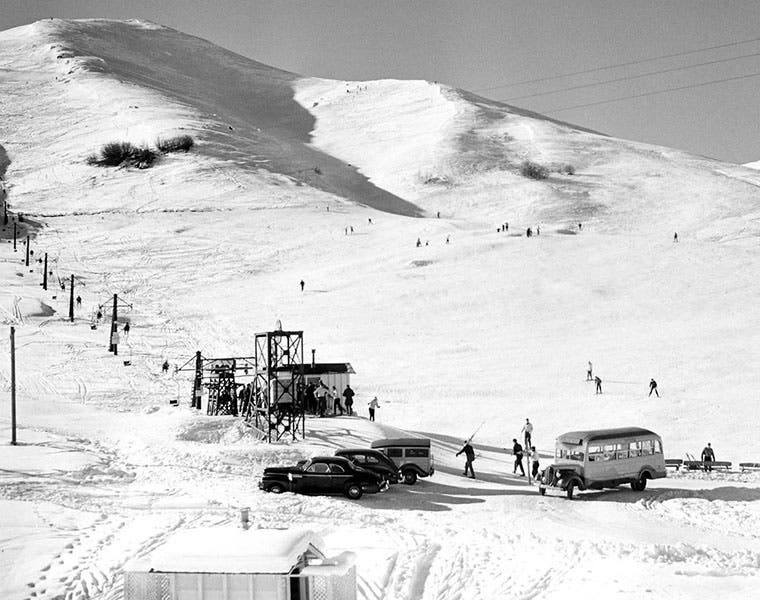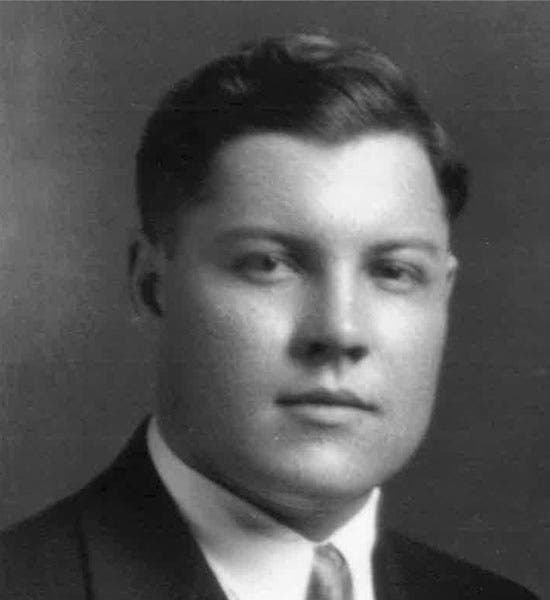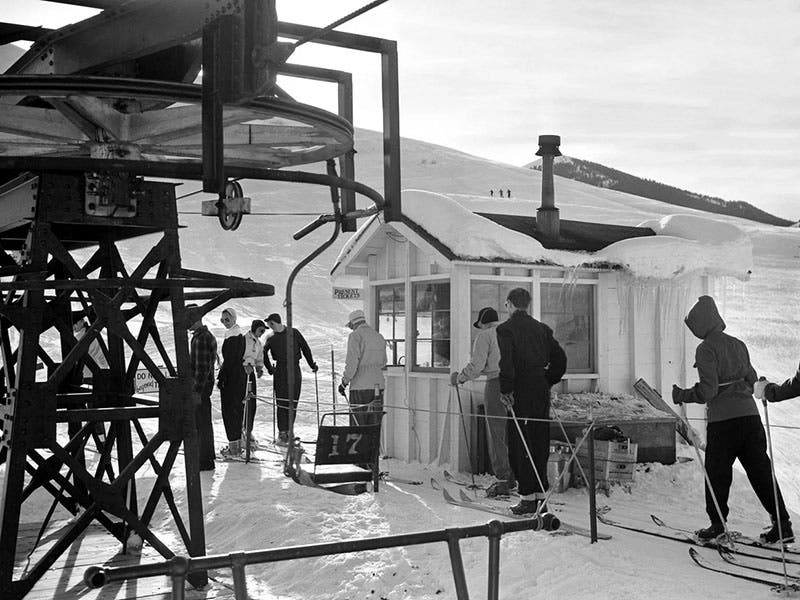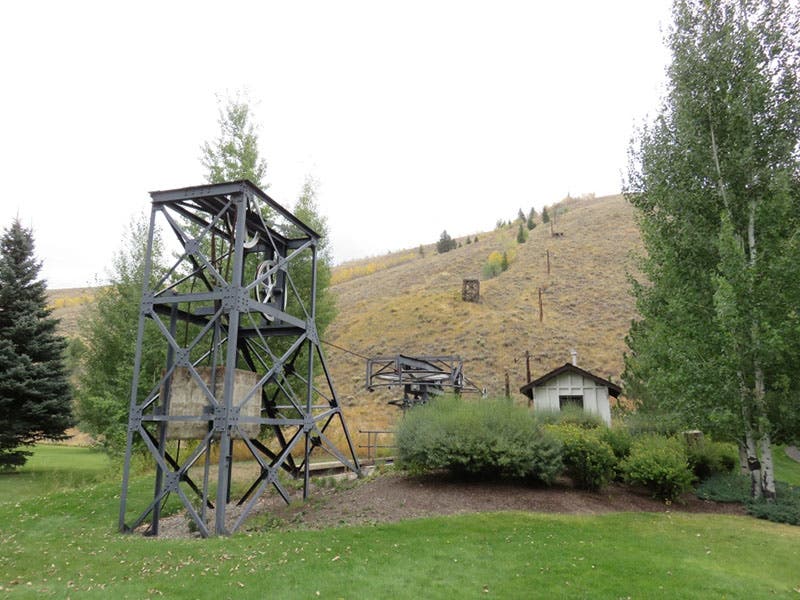Scientist of the Day - James Curran
James Michael Curran, an American civil engineer, was born June 9, 1903. Curran came from Omaha, Nebraska, and never attended college, but he went to night school and learned enough to pass a civil engineering exam. He was hired by the Union Pacific Railroad to design bridges, which he did with great skill later in his career. But his claim to fame came earlier, when he responded to a call to action from his employer, the Union Pacific Railroad.
Officials of the Union Pacific in the mid-1930s suddenly decided that they wanted to build a destination ski resort. Skiing was becoming a popular sport in New England, Colorado, and California, and many ski areas had been built to cater to the growing skiing crowd. To take skiers uphill, some of these had rope tows, which had been around for a while, or T-bar and J-bar conveyances, which had just been invented and were in use in a few places. But none of the existing ski areas were what you would call destination resorts, such as they had in Switzerland, where you took a long trip specifically for the purpose of skiing.
The Union Pacific Railroad passed through many towns with snow-covered hills and mountains nearby, and Union Pacific President Averell Harriman thought they if they built a ski resort at one of these locations that could only be reached by train, then people would pay railroad fare just to go skiing.
But there had to be a reason to go there, rather than patronize ski area closer by – it would have to offer some special attraction. You could build a lodge with a pool and night life and luxury dining, and the Union Pacific would do just that, but the best attraction anyone could think of was some kind of a lift that took people up a mountain in style, rather than dragging them up by a rope or pulling them with a T-bar, both of which were uncomfortable and awkward, and on occasion, dangerous. So a call when out to the engineers of the Omaha office: design us a ski lift!
Curran, who was 32 at the time, answered the call, and designed a chair lift that would pick a skier up off the ground, wearing his or her skis, provide a comfortable ride, and deposit the skier at the top, ready to schuss down. Curran said he got the idea from a conveyor mechanism used to unload bananas from ships – where he might have seen bananas being unloaded in Omaha, I have no idea. But he knew that he had to design a safe and workable mechanism, with adjustable tenson, while allowing for the sag of the cable, and incorporating dozens of other details like that. He built a rig on his car to test his designs for the chairs and find the best speed for picking up someone wearing skis.
While Curran was having his brainstorm, Union Pacific hired a consultant to find the perfect spot for a ski resort, one that only the Union Pacific could serve. He settled on a pleasant little town in southern Idaho called Ketchum, with lots of snow, and mountains all around. Harriman bought a sizeable amount of property and commenced construction. In 1936, Curran was sent out to install his chair lifts – two of them, each about a half-mile long, giving access to more than 15 trails on two different mountains. Late in 1936, the Sun Valley ski resort opened for business, with a sumptuous lodge, but the principal attraction was the pair of chair lifts. They were more expensive to build than rope tows, but the cost was not outrageous, so skiers were not socked with an unreasonable lift fee. Best of all, the lifts were comfortable and easy to use. Sun Valley became one of the most popular ski resorts in the United States. And nearly all the customers came there via the Union Pacific Railroad. Averell Harriman was a smart cookie. And he had another smart one working for him, in the person of James Curran.
Surprisingly, it took a while for other ski areas to build their own chair lifts. But after the War, nearly all the country’s ski resorts began installing them, after Curran's design. And for the next sixy years, the chair lift was the mainstay of the skiing industry. Curran had done his work well. Apparently, he built his bridges well too, although I was not able to find a Curran-designed railroad bridge on bidgehunter.com.
One of the two original lifts built by Curran in 1936 was later replaced and moved to Rudd Mountain in Sun Valley, where it has been preserved as a silent monument to the birth of the ski resort industry, and obliquely, to James Curran.
Last year, Smithsonian Magazine ran a long story on Curran and his chair lifts, from which we derived much of our information and two of our images. You can read it here.
William B. Ashworth, Jr., Consultant for the History of Science, Linda Hall Library and Associate Professor emeritus, Department of History, University of Missouri-Kansas City. Comments or corrections are welcome; please direct to ashworthw@umkc.edu.










